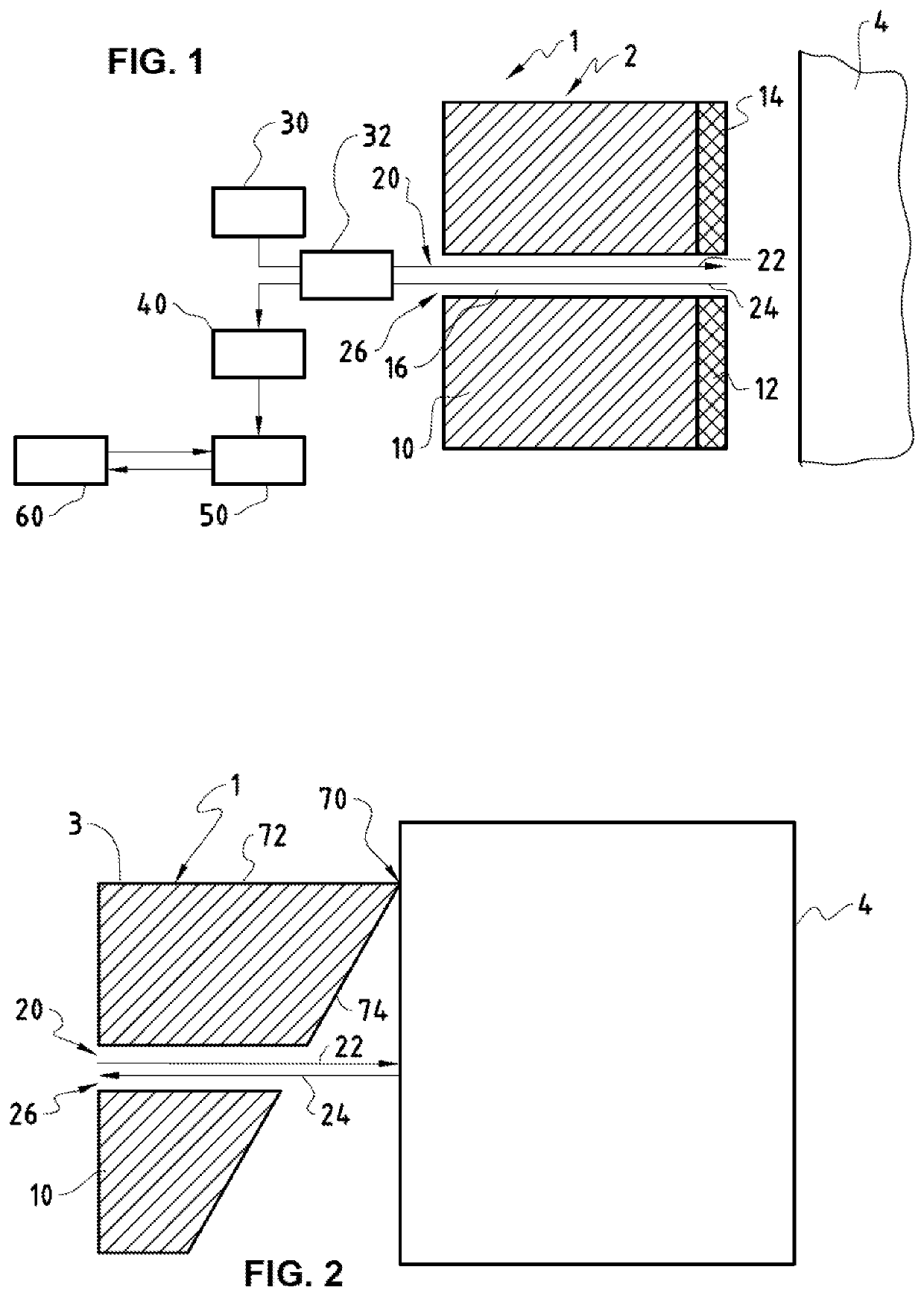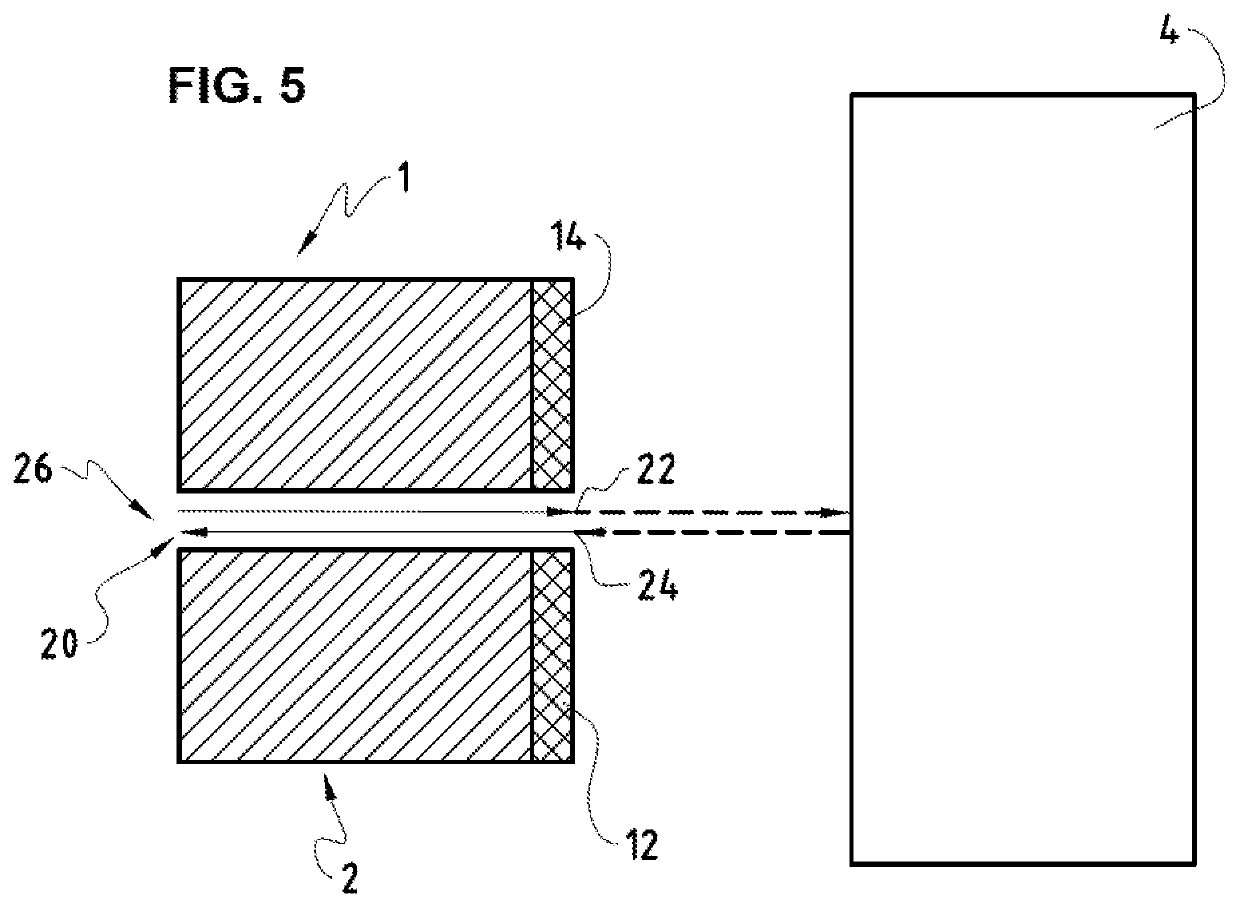Tool device and method for measuring a condition of a machining tool
a technology for measuring tools and machining tools, which is applied in the direction of manufacturing tools, grinding machine components, metal-working machine components, etc., can solve the problems of tool wear, tool wear, and machining tools always end up with some kind of wear and tear
- Summary
- Abstract
- Description
- Claims
- Application Information
AI Technical Summary
Benefits of technology
Problems solved by technology
Method used
Image
Examples
Embodiment Construction
[0038]In FIG. 1, the tool device 1 can be seen in a cross section view as well as a workpiece 4. Shown in FIG. 1 is a grinding tool 2 such as a grinding wheel 2 comprising a base body 10 and an abrasive layer 12, consisting of a compound in which abrasive grains are embedded. The compound is of bonding material and is composed for example of metal alloy, of synthetic resin or of ceramic. Embedded in a known way in this bonding material are abrasive grains which can be made of diamond or another correspondingly suitable material. As can been seen from FIG. 1 embedded into the base body 10 are a fiber optic sensor 20, providing two optical paths, in particular a first optical path 22 and a second optical path 24, preferably provided as in-line structure offering two optical paths in one physical line, called fiber 26 to direct light beams emitted by a light source 30. The fiber optic sensor 20 is fabricated from low-cost base material, typically silica and can be used in harsh conditi...
PUM
 Login to View More
Login to View More Abstract
Description
Claims
Application Information
 Login to View More
Login to View More - R&D
- Intellectual Property
- Life Sciences
- Materials
- Tech Scout
- Unparalleled Data Quality
- Higher Quality Content
- 60% Fewer Hallucinations
Browse by: Latest US Patents, China's latest patents, Technical Efficacy Thesaurus, Application Domain, Technology Topic, Popular Technical Reports.
© 2025 PatSnap. All rights reserved.Legal|Privacy policy|Modern Slavery Act Transparency Statement|Sitemap|About US| Contact US: help@patsnap.com



